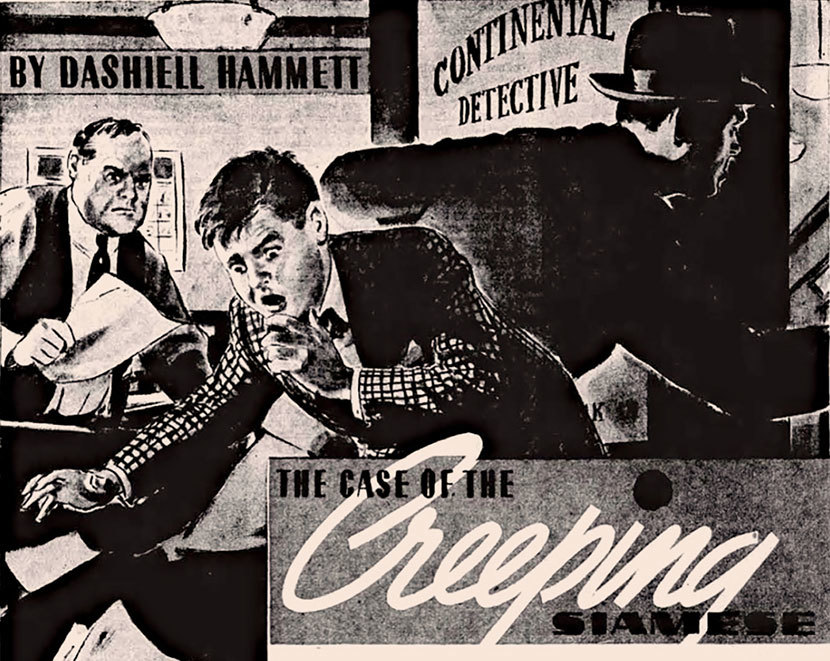Dashiell Hammett (1894–1961)
From Dashiell Hammett: Crime Stories & Other Writings

Dashiell Hammett was born 128 years ago, on May 27, 1894. Although he lived to be 66 years old, his career as an author ended when he turned forty in 1934. “I stopped writing because I found I was repeating myself,” he later told a reporter.
He began publishing fiction in 1922, soon after his health forced him to quit his job as a Pinkerton detective. During the next twelve years he submitted to pulp magazines about six dozen stories, most of which appeared in The Black Mask. In the remarkable five-year period that concluded his days as a writer, he finished five novels, including The Maltese Falcon and The Thin Man.
When bibliographers later compiled a list of his complete works, they were stymied by a handful of stories that were known only by their titles. For decades several evaded detection (so to speak), but a few years ago fans began to uncover Hammett stories that had appeared in newspapers, first in the mid-1930s and then in 1942. It soon became apparent that Hammett had licensed some of his earlier magazine stories to King Features Syndicate, better known for its distribution of comic strips. He had worked previously with King; in 1934 he and artist Alex Raymond (of Flash Gordon fame) created the comic strip Secret Agent X-9, which would run for nearly sixty years.
A catalog issued by King Features to newspaper editors in 1940 advertised a comprehensive list of available features, including a “series of novelettes and short stories [by Hammett] with illustrations by famous artists.” Since most local newspaper audiences had probably not seen The Black Mask even in its heyday and since Hammett had not collected his short fiction in books, it seems probable that many readers (and probably many newspaper editors) assumed that the stories were new material. The selections were often retitled, abridged, and altered—probably to make them suitable for a family audience—but it is unknown what role Hammett had in their editing, or if he had any say at all.
During 1942, in the months following the box-office success of John Huston’s adaptation of The Maltese Falcon, at least four stories are known to have been syndicated by King, each with new illustrations by Stuart Hamilton. One selection distributed that spring was “The Case of the Creeping Siamese.” Originally titled simply “Creeping Siamese” when it was published in 1926, the story features Hammett’s unnamed Continental Op, who solves a murder case in San Francisco after rejecting the hasty assumption, based on not much of anything, that a group of Asian men were the perpetrators. It seems a remarkably pointed choice, since only weeks earlier, the federal government had begun incarcerating Japanese Americans in internment camps on the Pacific Coast.
Read the original, uncut version of “Creeping Siamese” by Dashiell Hammett



